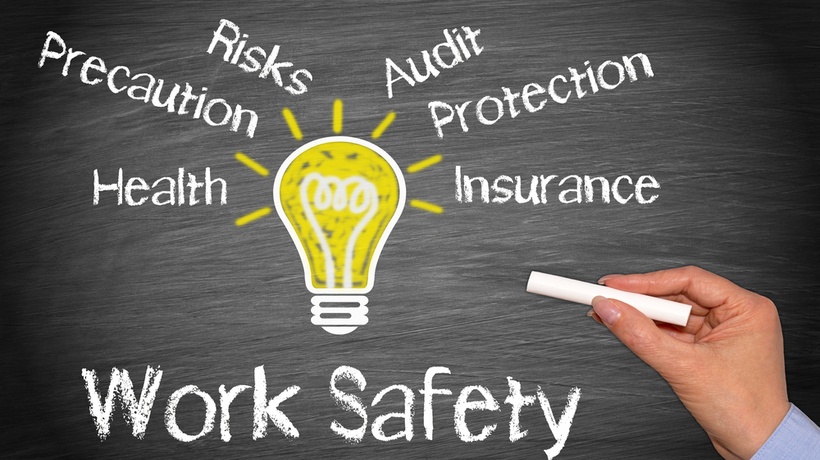8 Safety Training Topics To Pay Attention To
Health and safety training should be high on your list of L&D priorities because it underlies everything else. Employees must know how to follow the rules to avoid injuries and stay productive in the workplace. While anti-harassment initiatives safeguard their mental and emotional well-being. This helps you retain top talent and boost staffer self-confidence. The challenge is that there’s so much ground to cover. So many issues to address at various stages of the employment cycle. New hires need foundational compliance know-how to avoid mistakes right off the bat. Likewise, experienced staffers must continually expand their knowledge base and new job-related policies as they’re promoted. However, there are a few H&S mainstays every employee should know. Cover these 8 essential safety training topics in your compliance library to prevent accidents and uphold regulatory standards.

1. COVID-19 Protocols
Undoubtedly, the hot topic at the moment is the COVID-19 crisis. Namely, how it impacts employees’ work duties and roles. For instance, your warehouse staff must learn new safe handling procedures and storage requirements. While the customer service staff must focus on front-end protocols, such as how to interact with consumers and clean their equipment after each transaction. Detecting symptoms and reporting policies are also essential. If employees start running a fever or notice a dry cough, who should they notify? How should they minimize contamination until they’re able to leave the premises?
2. Office Ergonomics
Employees must also know how to work safely and productively within their own limits. For instance, how to avoid repetitive injury when working on the computer. Or how to maintain a healthy posture when sitting for long periods of time. Even taking frequent breaks to stretch and exercise is worth covering in safety training courses. Use video demos, online training tutorials, and tip sheets to help staffers reduce muscle strain and improve on-the-job productivity.
3. Violence Prevention
Violence prevention is one of the most challenging workplace safety training topics because it covers such a broad area. Aggression takes many forms. From verbal bullying to physical altercations. Not to mention, employees, team leaders, and consumers can be the victims or perpetrators. The most effective violence prevention activities are personal and emotionally engaging, such as simulations or anecdotes that let employees see both sides of the story and explore more nuanced forms of hostility. Encourage them to evaluate their own behaviors and cognitions to prevent future conflicts.
4. Cybersecurity
Many business operations take place online these days. This leaves your employees and company data vulnerable to online attacks. Staffers must know how to protect themselves and spot weaknesses in your digital infrastructure. For example, how to detect and report a potential data breach. There should also be activities that center on social media. Like how to interact with colleagues and consumers without posting sensitive info and which secure channels to use.
5. Accident Prevention
Accidents are bound to happen on the job. It’s more likely that employees slip and fall or injure their backs lifting a box than other catastrophe scenarios. For instance, sales employees don’t have to worry about severing their arms in heavy machinery because they work on the front end. The key to accident prevention safety training is realism. Avoid hypotheticals and extremes. Practical examples, video demos, and serious games help you prep the team for potential hazards.
6. Risk Assessment
Every day employees must make decisions that have a ripple effect. Even something as small as not cleaning a work surface or forgetting to wear gloves has a far-reaching impact. Thus, employees must know how to identify and evaluate risks. Is it worth it or should they take the safe route? What are all the possible outcomes if they do take the risk, both good and bad? For example, some risks lead to personal growth and organization-wide changes. Like trying a new task approach that improves workplace proficiency. While others have more disastrous results that tarnish your brand reputation and lead to worker’s comp claims.
7. Safety Gear
What do employees need to wear to safeguard themselves, their coworkers, and consumers? This covers everything from lifting belts to face masks, depending on the situation and job roles. Provide cheat sheets with visuals that show employees which gear to sport and why it’s so essential. You can also develop matching serious games, wherein staffers must drag and drop the proper gear/attire onto the character. Offer some background info so they know the context. For instance, the type of face masks employees must wear depends on their proximity to others and work tasks.
8. Emergency Procedures
Every member of your staff should know what to do in case of emergency. Again, it’s best to avoid the extremes and stick to realistic scenarios, such as natural disasters, fires, and armed intruders. Of course, there must also be a section dedicated to Coronavirus safety training. What should employees do if they suspect someone is symptomatic? How do they decontaminate areas a symptomatic person has come into contact with?
Some of these safety training topics are time-honored safety training traditions because they’re crucial to business operations. While others are newcomers that reflect the changing times. For example, most of us probably didn’t see pandemic prep materials on the L&D horizon. But we’re forced to rethink our strategy and incorporate new JIT tools to support the team. And that’s the trick to online training success. You must always be one step ahead of emerging challenges and track the evolution of compliance issues. Then devise innovative ways to keep employees up-to-date without boring them to tears.
Health and safety training should be high on your list of L&D priorities, now more than ever. If you want to find everything you need in order to launch an effective safety training strategy for your organization, download the eBook Safety Training Success For SMBs: How To Prep Your Team For A Post-Pandemic Workplace and benefit from its valuable insights and best practices.

